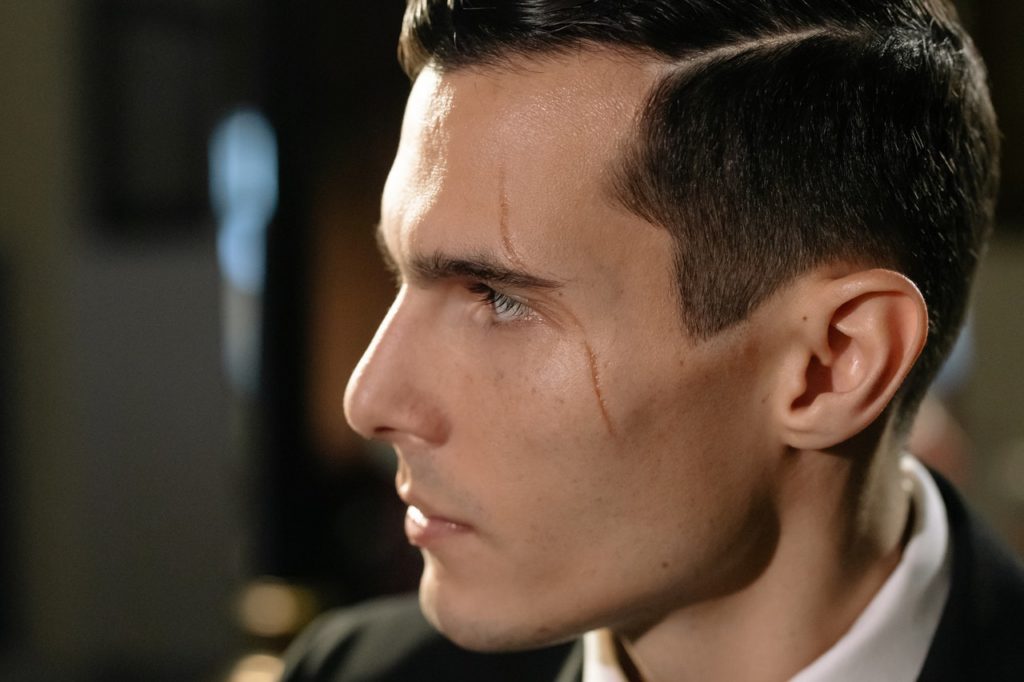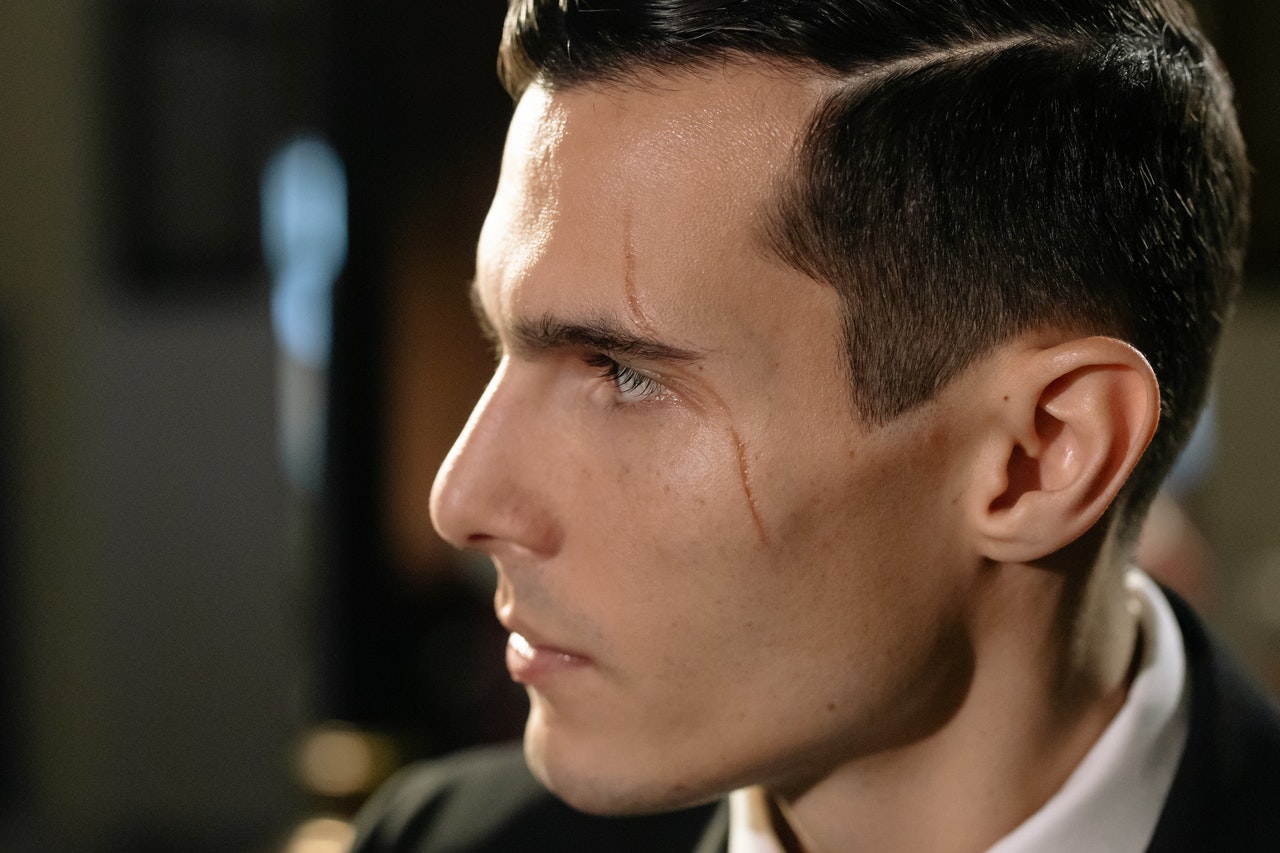
I learned this today. Scars are left after a wound because the body is trying to put a protective covering over the wound as fast as it can.
When you cut your skin, if it is more than a surface graze, you start to bleed. The first thing that happens is your blood clots. There are two reasons for this. Firstly, it is obviously not good to keep bleeding. Hemophiliacs have blood that won’t clot, and this can be fatal. The second reason is that the clotted blood will form a cover over the wound, protecting and supporting it. The platelets coming out will start to stick to the edge of the wound and they will change shape. They will also make a protein called fibrin which forms a mesh for the platelets to stick to.
This scab will completely cover the wound and will protect it while it heals from underneath. The scab supports the wound while the skin is healing, and it also provides a platform for cells to move across. When the wound is healed, the scab will fall off.
After the scab has formed, the wounded area starts to swell. This is to provide space so that the damaged and dead cells can be removed by polymorphonuclear neutrophils, a type of white blood cell. They also removed bacteria and anything else that might have been stuck in the wound. This lasts for about two days.
Once the wound is clean, fibroblasts start to build up at the wound, underneath the scab. A fibroblast is a cell that can produce collagen, which is what skin is made of. Fibroblasts start to create the collagen that will replace the part of the skin that was cut away. They also become a type of muscle cell called myofibroblasts. The job of these is to grip the edges of the wound and contract, pulling the sides closer together. This helps the wound heal more quickly because the collagen has less distance to cover.
The wound is still only held together by the scab, so the fibroblasts start to make collagen as fast as they can and lay it down. And this is what leads to the scar.
In most of the skin across your body, the collagen has a cross-weave structure. This gives it strength and elasticity. When the fibroblasts are trying to repair the wound in the skin, they are more concerned with getting the collagen down than they are with what shape it is in, and they lay down the collagen in a single direction. This means it is less supple and visibly stands out. With some wounds, extra collagen is produced, causing the scar to be raised above the surrounding skin.
When the fibroblasts are laying collagen, they also don’t give thought to sweat glands, hair follicles, and nerves. Their one job is to get the hole in the skin replaced as quickly as they can. We would prefer our bodies to heal without leaving scars, but, evolutionarily, it makes more sense to heal a wound as quickly as possible than it does to make it look nice.
Once the wound is sealed, the collagen is replaced by a stronger collagen. The skin slowly reorganizes itself and the scar may soften and fade, but it will not disappear. They don’t disappear because they are a separate scaffold of collagen fibers to the rest of the skin. The skin regenerates from the bottom up. The new cells push their way to the surface, and we shed them when they die. These new skin cells simply travel around the scar, so it is never shed.
So, we have scars left after a wound because our body is trying to close and strengthen the wound as fast as it possibly can, leaving a straight-line scaffold of collagen, which is different from the usual basket-weave structure in the rest of our skin. This makes scars stand out and be less supple. And this is what I learned today.
Sources
https://www.bbc.com/future/article/20161007-why-is-scar-tissue-different-to-normal-skin
https://www.nhs.uk/conditions/scars/
https://www.bbc.com/future/article/20161007-why-is-scar-tissue-different-to-normal-skin
https://en.wikipedia.org/wiki/Scar
https://en.wikipedia.org/wiki/Scar
https://www.sciencefocus.com/the-human-body/why-dont-scars-disappear-as-skin-is-shed/


[…] primary goal is to replace the skin as quickly as possible to keep infection out and your blood in. When it does this, it leaves a scar because it builds the new skin so quickly. Broken bones have a different priority when healing. For bones, the priority is healing to be as […]